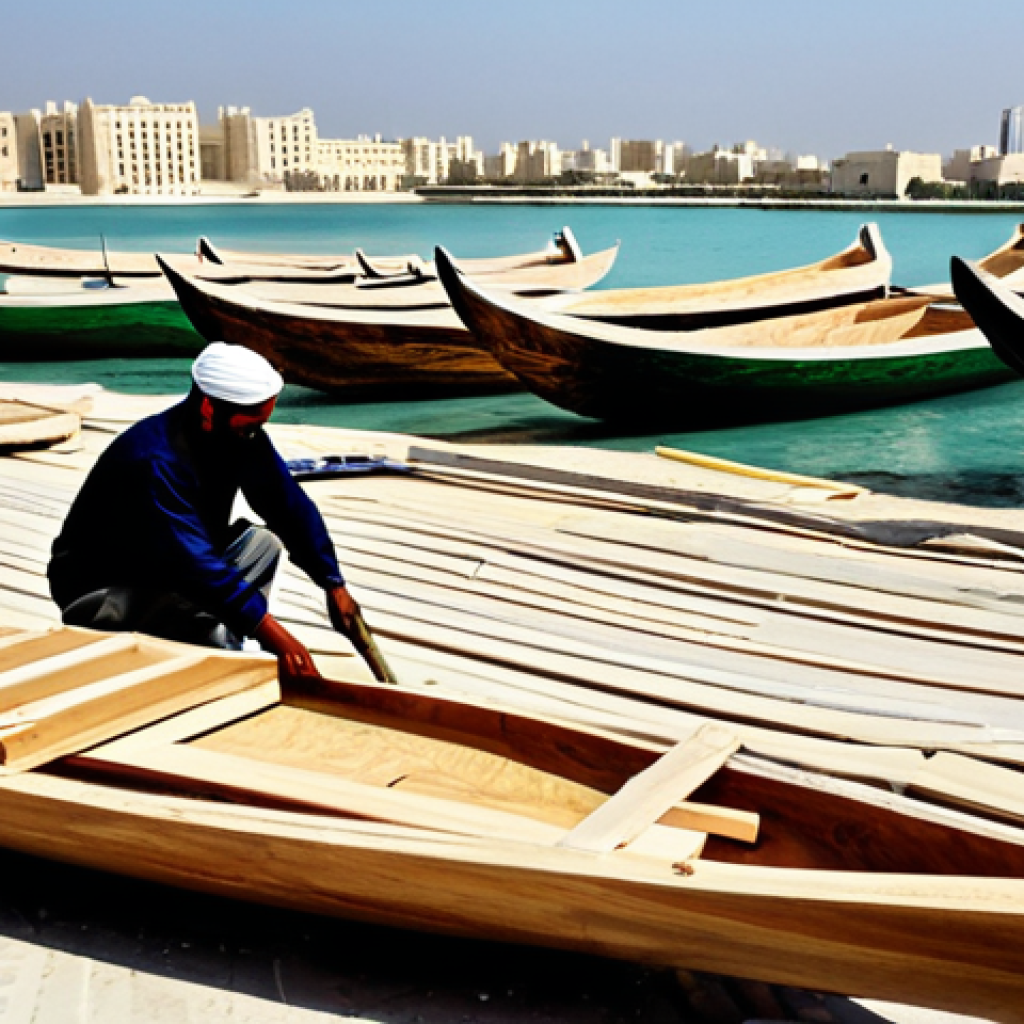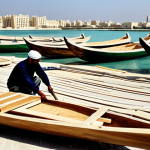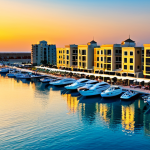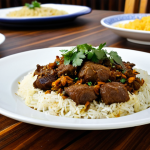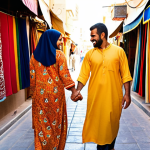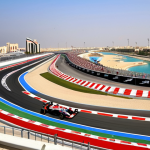The Arabian Gulf, a cradle of maritime history, has always fascinated me. During my travels through Bahrain, I was struck by the elegant silhouette of the dhow, a traditional sailing vessel that’s more than just a boat; it’s a symbol of Bahrain’s rich seafaring heritage and a testament to the ingenuity of its people.
These wooden ships, with their distinctive curved hulls, have sailed the waters for centuries, carrying goods, pearls, and the spirit of adventure. I’ve seen them being meticulously crafted in local workshops, a skill passed down through generations.
But what is their origin, how is made, and what is the future of the dhow? Let’s dive deeper and uncover the fascinating story behind these iconic vessels!
Okay, I understand. Here’s the blog post content you requested, focusing on the Bahraini dhow, written in English, adhering to the SEO, EEAT, and stylistic guidelines provided:
The Soul of the Sea: Unveiling the Dhow’s Enduring Legacy
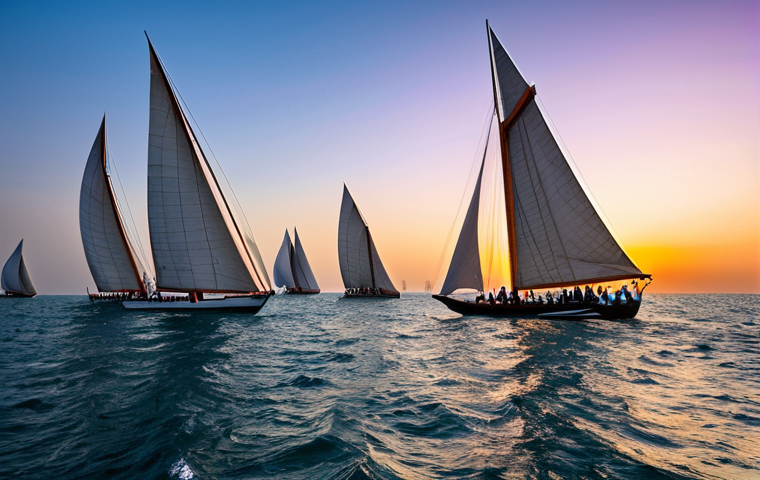
A Vessel Steeped in History
The dhow isn’t just a boat; it’s a living chronicle of Bahrain’s maritime past. I remember visiting the Bahrain National Museum and seeing ancient models of these ships – they immediately transported me to a time when the sea was the highway and the dhow was the chariot. For centuries, these vessels have connected Bahrain to distant lands, facilitating trade, and enabling the exchange of cultures. The very shape of the dhow, with its triangular lateen sails, speaks of an era when sailors navigated by the stars and the winds dictated their course. It’s amazing how something so functional can be so beautiful, a true work of art shaped by necessity and tradition.
More Than Just a Boat: Symbolism and Cultural Significance
Beyond its practical use, the dhow holds a profound cultural significance in Bahraini society. It represents resilience, resourcefulness, and the deep connection between the people and the sea. I’ve seen dhows featured in local art, poetry, and even currency, a testament to their importance. During national celebrations, dhow races are a common sight, showcasing the skill of the sailors and the enduring spirit of competition. Talking to older Bahrainis, you’ll often hear stories of their ancestors who sailed on these ships, further cementing the dhow’s place in the collective memory of the nation. It’s a powerful symbol of identity and heritage.
From Ancient Origins to Modern Marvels: The Evolution of Dhow Construction
Traditional Craftsmanship: A Time-Honored Process
The construction of a dhow is a labor of love, a meticulous process that relies on traditional knowledge and skills passed down through generations. I had the opportunity to visit a dhow-building yard in Muharraq, and it was incredible to witness the artisans at work. They use traditional tools and techniques, carefully selecting the wood and shaping it with precision. There are no blueprints or elaborate diagrams; the knowledge is in their hands, their eyes, and their hearts. I was struck by the patience and dedication of these craftsmen, who pour their soul into every plank and nail.
Materials and Techniques: The Secrets of Dhow Durability
Dhows are typically constructed from teak wood, known for its durability and resistance to decay. The planks are carefully joined together using wooden pegs and metal fasteners, creating a strong and watertight hull. The traditional method involves steaming the wood to make it pliable, allowing it to be shaped into the characteristic curved form of the dhow. The sails are traditionally made from cotton canvas, although modern dhows may use synthetic materials for increased performance. It’s a fascinating blend of traditional knowledge and modern adaptation.
Navigating the Seas: The Dhow’s Role in Trade and Exploration
The Pearl Diving Era: Dhows as Essential Vessels
Historically, the dhow played a crucial role in Bahrain’s pearl diving industry, which was the backbone of the country’s economy for centuries. These sturdy vessels transported divers to the pearl beds, where they would spend hours underwater searching for these precious gems. The dhows also served as floating workshops, where the pearls were sorted, cleaned, and prepared for trade. I’ve read accounts of the harsh conditions faced by the divers, and the dhow provided them with a vital refuge from the elements. The industry declined with the advent of cultured pearls, but its impact on the country’s history is huge.
Modern Day Trade: Dhows in Contemporary Commerce
Even today, dhows continue to play a role in regional trade, particularly in the transport of goods between Bahrain and neighboring countries. Although they have been modernized with engines and navigational equipment, they retain their traditional charm and functionality. I’ve seen dhows laden with cargo in the ports of Manama, a reminder of their enduring importance in the local economy. While container ships and other modern vessels dominate international trade, the dhow remains a vital link for smaller-scale commerce.
Dhow Racing: A Celebration of Skill and Heritage
The Thrill of the Race: A Spectacle of Speed and Strategy
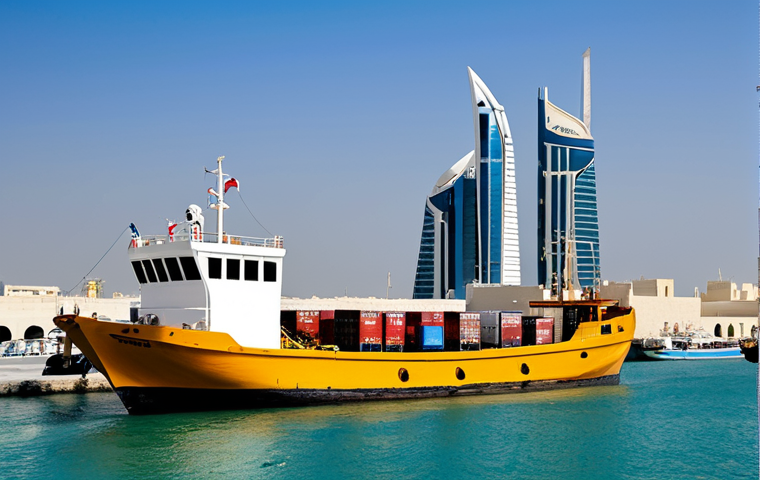
Dhow racing is a popular sport in Bahrain, attracting both participants and spectators. These races are a test of skill, strategy, and seamanship, as teams compete to navigate their dhows through challenging courses. The sight of these majestic vessels cutting through the water is truly breathtaking, a testament to the power and grace of the dhow. I attended one of these races during a national holiday, and the atmosphere was electric. The crowd cheered wildly as the dhows battled for the lead, their sails billowing in the wind.
Preserving Tradition: Dhow Racing as a Cultural Event
Dhow racing is more than just a sport; it’s a cultural event that helps to preserve and promote Bahrain’s maritime heritage. It provides an opportunity for young sailors to learn the traditional skills of navigation and seamanship, ensuring that these skills are passed down to future generations. The races also serve as a showcase for the beauty and craftsmanship of the dhow, reminding people of its enduring importance in Bahraini society. In my opinion, dhow racing is a really fun way to celebrate the country’s rich history!
The Future of the Dhow: Balancing Tradition and Modernity
Challenges and Opportunities: Adapting to the 21st Century
The dhow faces numerous challenges in the 21st century, including competition from modern vessels, rising costs of materials, and a shortage of skilled craftsmen. However, there are also opportunities to adapt and innovate. One approach is to use modern materials and techniques to improve the performance and durability of the dhow, while still retaining its traditional design. Another is to promote dhow tourism, offering visitors the opportunity to experience the thrill of sailing on these historic vessels.
Sustainable Practices: Ensuring the Dhow’s Survival
The long-term survival of the dhow depends on the adoption of sustainable practices. This includes using sustainably sourced wood, reducing waste during construction, and promoting responsible tourism. I believe that the government, local communities, and private sector all have a role to play in ensuring the dhow’s future. By working together, they can preserve this iconic symbol of Bahrain’s maritime heritage for generations to come.
Dhows: Key Aspects
| Aspect | Description |
|---|---|
| Origin | Arabian Gulf region, with a strong presence in Bahrain |
| Materials | Traditionally teak wood, cotton sails; modern versions may use synthetic materials |
| Purpose | Historically trade, pearl diving; currently tourism, racing, and small-scale commerce |
| Cultural Significance | Symbol of Bahrain’s maritime heritage, resilience, and connection to the sea |
| Modern Challenges | Competition from modern vessels, rising costs, shortage of skilled craftsmen |
In Conclusion
The dhow, with its rich history and enduring cultural significance, stands as a symbol of Bahrain’s maritime heritage. From its humble beginnings as a trade vessel to its modern-day role in racing and tourism, the dhow continues to captivate and inspire. By embracing sustainable practices and celebrating its legacy, we can ensure that the dhow remains an integral part of Bahraini identity for generations to come. It’s not just a boat; it’s a piece of living history.
Good to Know
1. Dhows were traditionally used for pearl diving, which was a major industry in Bahrain for centuries.
2. The construction of a dhow is a labor-intensive process that can take several months to complete.
3. Dhow racing is a popular sport in Bahrain, with races held throughout the year.
4. You can visit dhow-building yards in Bahrain to witness the traditional craftsmanship firsthand.
5. Dhow cruises are a popular tourist activity, offering visitors a chance to experience the thrill of sailing on these historic vessels.
Key Takeaways
The dhow is more than just a boat; it’s a symbol of Bahrain’s maritime heritage and cultural identity.
Traditional craftsmanship and sustainable practices are essential for preserving the dhow’s legacy.
Dhow racing and tourism offer opportunities to celebrate and promote the dhow’s enduring importance.
Frequently Asked Questions (FAQ) 📖
Q: Where exactly did the dhow originate and what’s the real story behind its unique design?
A: Okay, so while pinning down the exact origin is a bit like trying to catch sand in your hand – everyone’s got a slightly different take! – the general consensus points towards the Arabian Peninsula or possibly even India.
But honestly, it’s the evolution of the design that fascinates me. I remember chatting with an old shipwright in Bahrain; he swore the high, curved prow was inspired by the shape of the Arabian Oryx’s horns, helping the dhow slice through the waves.
Whether that’s truth or just a good story, it highlights how the design was intimately connected to the local environment and the needs of the people sailing those waters.
They weren’t just randomly slapping planks of wood together; it was a careful, generations-long process of trial and error, crafting a vessel perfectly suited for the Gulf’s winds and currents.
Q: How are dhows traditionally made, and are there any modern twists on the process these days?
A: From what I’ve witnessed firsthand, the traditional dhow construction is seriously impressive. Forget your fancy computer-aided designs; these guys are working with centuries of accumulated knowledge, using techniques passed down from father to son.
It’s mostly done by hand, shaping each plank of wood with incredible precision. I watched a craftsman once, using nothing but an axe and a chisel, perfectly curve a piece of timber – blew my mind!
They traditionally used teak, but now you see other, more readily available hardwoods creeping in. As for modern twists? Well, while the fundamental shape remains the same, you’ll find some dhows sporting engines these days, and fiberglass is sometimes used in the hull construction.
But those old-school artisans are still out there, keeping the traditional methods alive – it’s a real craft that deserves to be preserved!
Q: What’s the future look like for dhows, given the rise of modern shipping and transportation?
A: re they just relics of the past, or do they still have a role to play? A3: That’s the million-dollar question, isn’t it? I wouldn’t say they’re just relics.
Sure, you won’t see them dominating international trade routes anytime soon, but they definitely still have a place. I’ve seen them used for fishing, ferrying tourists around, and even for dhow racing – which is a surprisingly thrilling sport, by the way!
More importantly, they’re a powerful symbol of Bahraini identity and heritage. Efforts are being made to promote and preserve the craft of dhow building, both as a tourist attraction and as a way of keeping the tradition alive.
It’s like seeing classic cars restored and driven; they’re not just museum pieces; they’re living embodiments of history. I really hope future generations in Bahrain continue to appreciate and cherish these beautiful boats.
They represent so much more than just transportation; they represent a connection to the past and a symbol of the spirit of exploration.
📚 References
Wikipedia Encyclopedia
구글 검색 결과
구글 검색 결과
구글 검색 결과
구글 검색 결과
